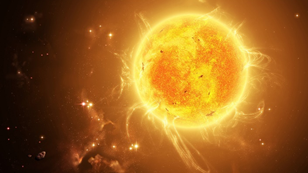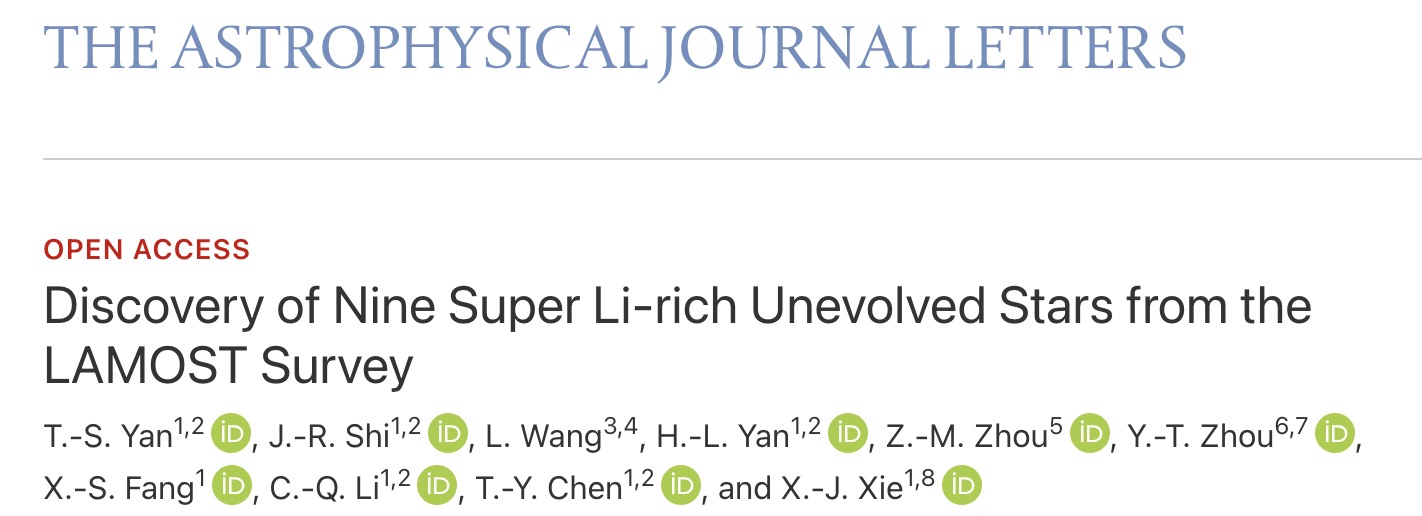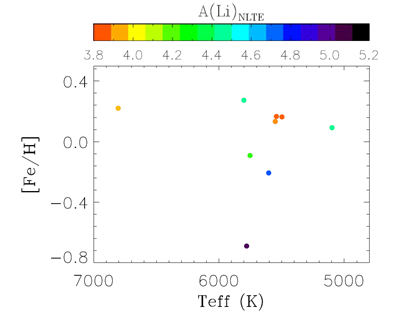
Illustration of a solar diagram of an unevolved yellow star. /CAS
Illustration of a solar diagram of an unevolved yellow star. /CAS
Thanks to China's largest optical telescope, astronomers have discovered 9 new lithium-rich unevolved stars. This is more than twice as many as previously known, as lithium is a key chemical element linking cosmology to the structure and evolution of stars.
Stellar evolution is the process by which a star changes over the course of time. Depending on the mass of the star, its lifetime can range from a few million years for the most massive to trillions of years for the least, which is considerably longer than the age of the universe.
With the help of the Large Sky Area Multi-Object Fiber Spectroscopic Telescope (LAMOST), a team led by researchers from the National Astronomical Observatories under the Chinese Academy of Sciences (CAS) has discovered a record number of unevolved stars rich in lithium. The study was published in The Astrophysical Journal Letters.

Screenshot of study published in The Astrophysical Journal Letter
Screenshot of study published in The Astrophysical Journal Letter
Researchers wrote in the paper that the newfound stars present unusually high levels of lithium, which suggests that they must have experienced a history of lithium enrichment.
According to the study, the lithium contents of the nine stars are about three times higher than the lithium content of the sun. Given that seven of the stars are fast rotators, the astronomers assume that the accretion of circumstellar matter may be the main contributor to the stars' lithium enhancement.
Although the mechanisms of lithium enrichment in the unevolved stars have been discussed widely, they remain unclear. The detection of the nine new stars of this class could be a breakthrough in the field, the researchers noted in a statement on Tuesday.

Illustration of effective temperature vs. metallicity for the 9 super lithium-rich unevolved stars. /CAS
Illustration of effective temperature vs. metallicity for the 9 super lithium-rich unevolved stars. /CAS
LAMOST went into operation in 2008 to collect high quality spectra data that helps astronomers study celestial bodies' chemical composition, density, atmosphere and magnetism. The telescope has helped scientists discover the heaviest stellar black hole and the most lithium-rich giant star.
Further studies are necessary in order to confirm these discoveries. The researchers said that sky surveys by LAMOST will yield further discoveries of super lithium-rich unevolved stars.
(With input from Xinhua)

